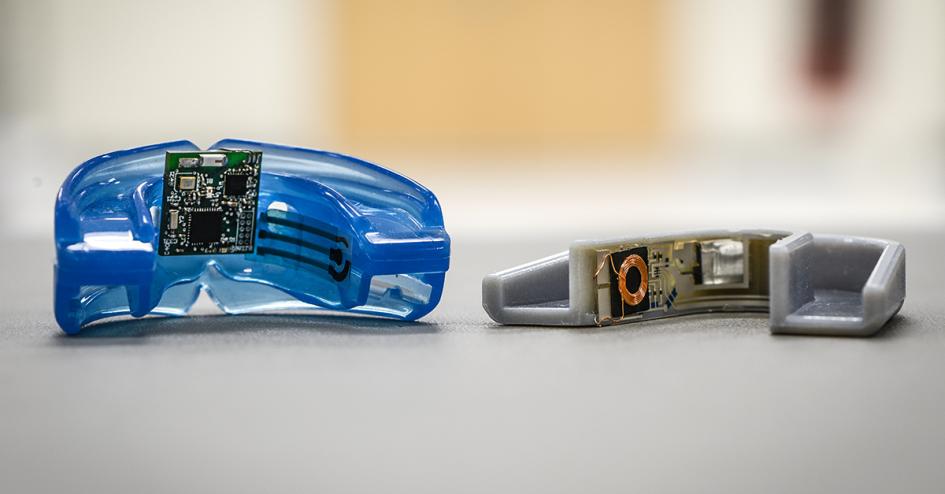
Smart mouth guards can detect the threat of physical exhaustion and dehydration in athletes and warfighters, thanks to emerging flexible hybrid electronics technology. The flexible, plastic mouth guard is laden with sensors that can continuously monitor lactate concentrations in saliva and give early warning of imminent injury.
The emerging technology was made available by NextFlex, the DoD-sponsored manufacturing innovation institute and member of the Manufacturing USA network. It led to breakthroughs that include the use of low-power Bluetooth to send information to smartphones, watches and other electronic devices, and the ability to wirelessly recharge the mouth guard batteries for extended use.
NextFlex partnered with the University of California San Diego and the Palo Alto Research Center for this important breakthrough in the field of non-invasive nanobioelectronics, which integrates sweat, saliva and tears with electronic transducers. NextFlex’s role in the project was to enhance the manufacturability and usability of the device. That meant adding a rechargeable battery, wireless charging capability, improving the wireless communication, and improving the form factor so that it looks and acts like a standard mouth guard.
The mouth guard platform features copper-clad polyimide as the primary base substrate and anatomically-miniaturized instrumentation electronics, which are fabricated on a small, flexible plastic foil. Unlike RFID-based biosensing systems, which require large proximal power sources, this platform enables real-time wireless transmission of data for on-demand processing, diagnostics, or storage. The sensor can produce real-time data with a usable life of roughly 18 hours.
Long term, the technology’s flexible sensors may have medical applications in ultrasound transducers, cardiac arrhythmia monitors, hearing aids, catheters and test probes.
The ability to produce this type of technology at scale is key to future adoption. It illustrates how advanced manufacturing increasingly plays a critical role in the U.S. innovation ecosystem, supporting U.S. technological competitiveness and driving product and process improvements that strengthen the U.S. economy.
Learn more about how the Manufacturing USA member institutes are working to secure U.S. global leadership in advanced manufacturing.

